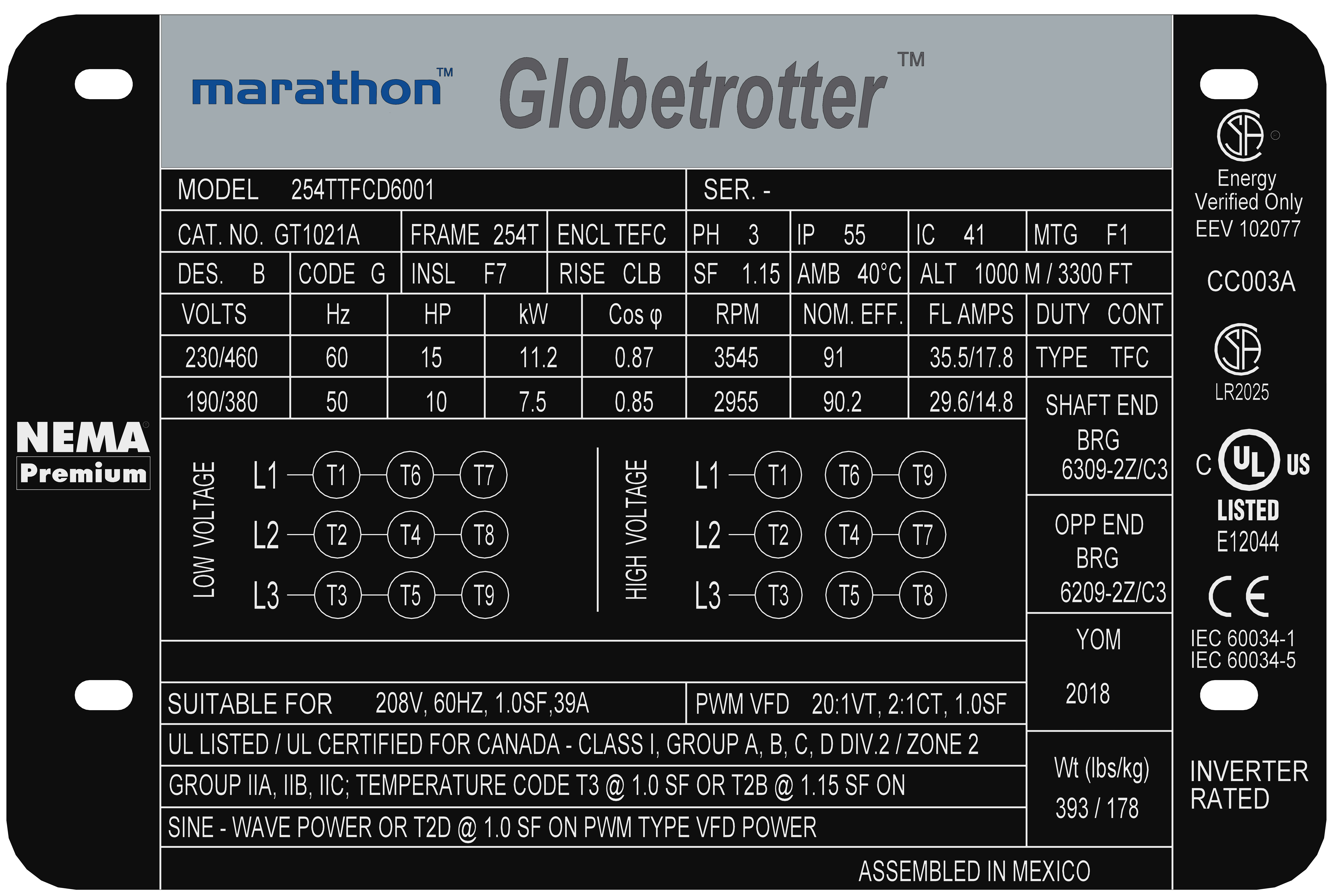How to Cross Reference an Electric Motor
Every motor end-user hits a point where they need to cross reference a motor to a newer replacement. Whether it’s because the previous model is out of stock, or no longer being manufactured, knowing how to identify a proper cross reference replacement is vital to keeping your supply chain consistent.
What is an electric motor cross reference?
Motor cross-referencing is a structured process used to identify an equivalent electric motor to replace an existing one. Given the wide variety of motor designs, ratings, and performance characteristics, selecting the right replacement is crucial to ensure seamless operation without disruptions.
Here, you'll learn to distinguish between essential parameters and more flexible specifications when conducting a cross-reference.
How to Cross Reference
We’ll guide you through each step of the process to help you find the perfect replacement for your electric motor.
Gather Nameplate Data of the Motor to be Replaced
First and foremost, start with the nameplate of your existing motor. This will serve as your guide to the specifications you need to match and identify in a new motor.

Your motor nameplate will be your best source for the following features:
- Part/Catalog Number
- Power Size
- Voltage
- Phase
- Speed
- Frame size
- Base Type
- Flange Type
- Application Details
- Full Load Amps
- Service Factor
- Efficiency
- Enclosure Classification
- Protector Spec
Identify Your “Must-Have” Parameters
Finding a like-for-like replacement is ideal, but it’s not always easy. When selecting a motor, be sure to focus on these essential specifications:
- Horsepower (HP): Must match or exceed the original rating.
- Service Factor: Should match or be higher, unless upgrading to a motor with greater horsepower.
- Poles: Must match the original specification.
- Voltage: Must match. A single voltage motor can be replaced with a dual voltage motor, but not the other way around.
- Flange: Non-flanged motors can be replaced with flanged motors, but flanged motors cannot be replaced with non-flanged ones.
- Base: Must match the original motor's base design.
- Frame Size: Ensure both the base frame and suffix match.
- Frequency: Must match. However, a single-frequency motor can be replaced with a 50/60 Hz design that includes the original frequency.
- Speed: Must align with the original motor's speed.
- Rotation: Must match, unless switching to a reversible motor.
- Thermal Protector: A non-protected motor can be replaced with a protected one, but not the reverse.
- Level of protection: Ensure both the original and replacement motor have the same level of protection, such as IP55.
- Shaft Size: Must match. If a different size is needed, a coupling can be used.
- Mounting: Must align with the original motor's mounting type.
- Efficiency Class: The class of the replacement motor should equal or exceed that of the original for optimal performance and energy savings.
- Enclosure:
- ODP / DP Can Use TEFC, TENV
- OPEN Can Use ODP / DP, TEFC, TENV
- TEFC Can Use TENV
- TENV Can Use TEFC
- TEAO Can Use TENV, TEFC
- Explosion Proof Must Match
- Contact factory when using an ODP, TEFC, or TENV motor, having a Protector, in an "Air-Over" application
Optional Parameter to Consider
These specifications are important, but not necessary to meet the operational replacement of your motor:
- Agency Certifications – Must comply with local regulations.
- Efficiency – Should meet or exceed recommended standards.
- Shaft – Recommended but not mandatory.
- Bearing Type – Optional, not required.
- Conduit Box Location – Optional, not required.
Cross-referencing electric motors is all about understanding your motor's capabilities and ensuring it meets the demands of your production line. Identifying the key parameters that matter most is essential for maintaining safety, maximizing uptime, and extending the motor's lifespan.